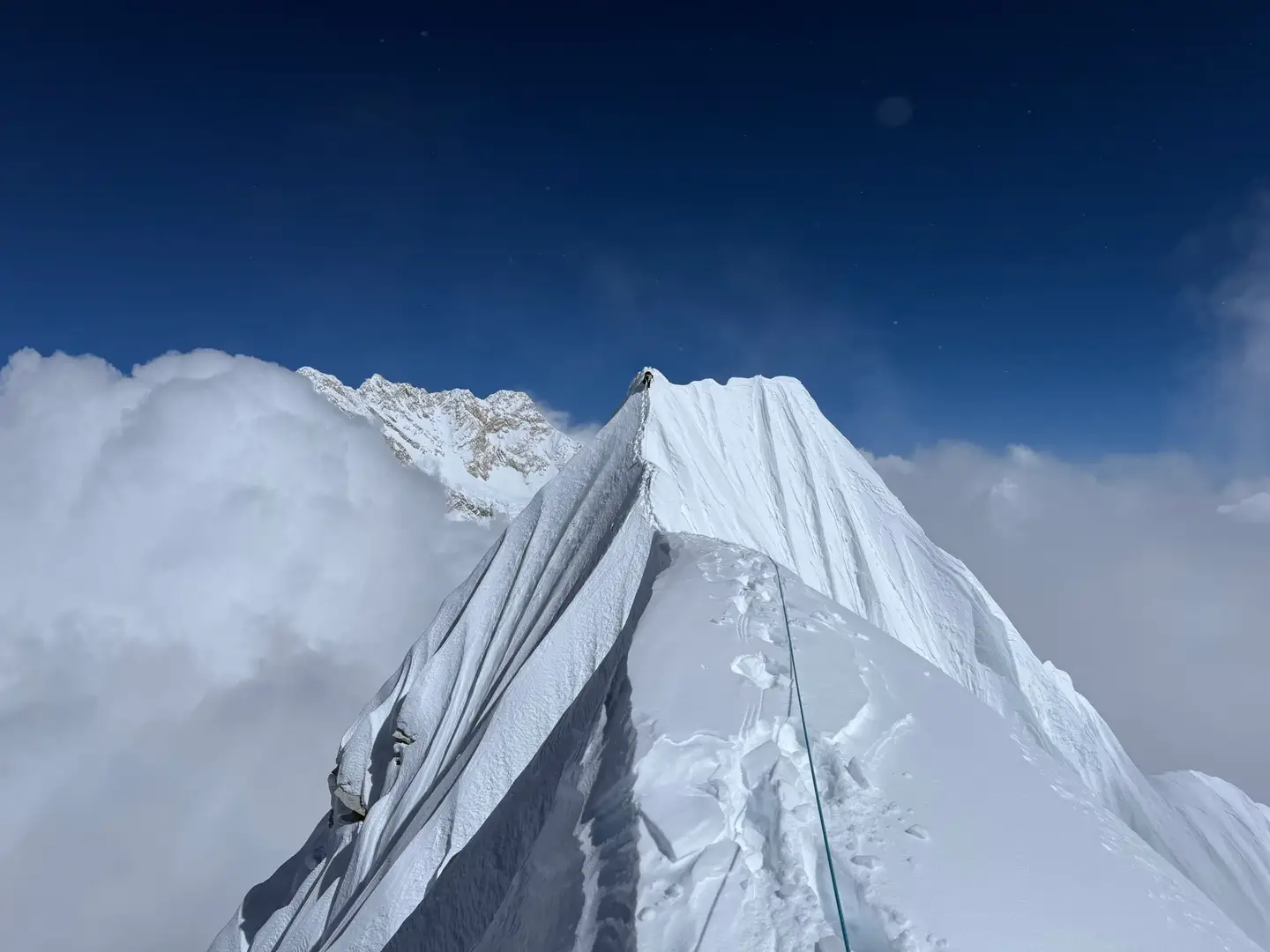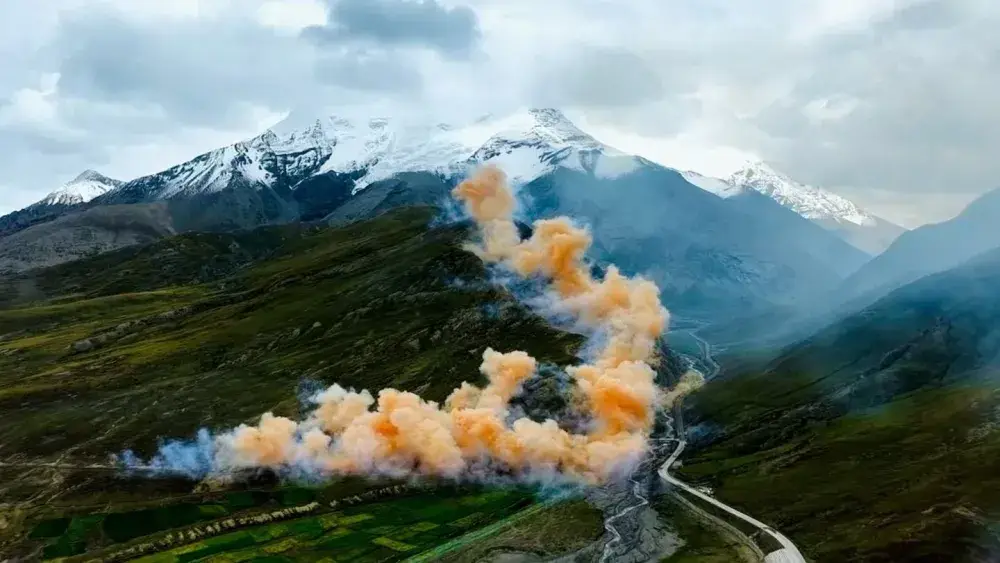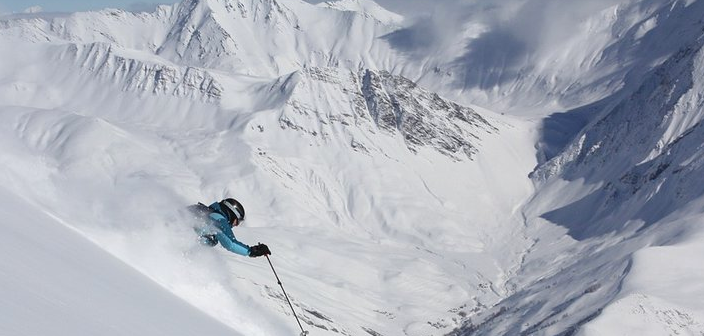

Chamonix Ski Guide Liz Oakes-Smart – Blue Collar Pros
Popular Stories
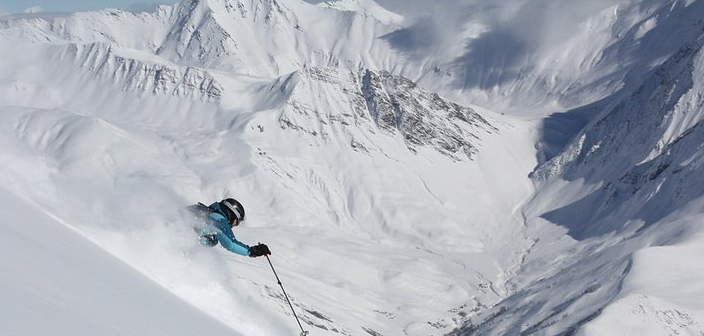 Liz sending in La Grave, France. Erin Smart photo.
Liz sending in La Grave, France. Erin Smart photo.
Aspen, Colorado native Liz Smart, 32, is one of
eight American females to achieve full international certification through the
American Mountain Guides Association and the International Federation of
Mountain Guide Associations. Her husband, Miles, achieved full certification in
his 20’s, making him the youngest American to do so. In 2004, he was the AMGA’s Guide of
the Year. Together, they run Smart Mountain Guides, an
international guiding operation based in Chamonix, France.
What's your guiding philosophy?
How has it evolved so far?
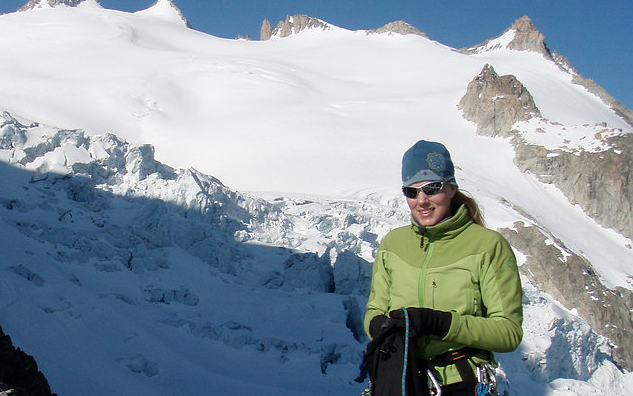 Liz on a ski touring trip in Chamonix. Smart Mountain Guides photo.
Liz on a ski touring trip in Chamonix. Smart Mountain Guides photo.
The reason I became a guide was
to share the mountains with people. That’s a huge part of my philosophy. I want
people to experience the mountains. I enjoy pulling people out of their comfort
zone and showing them something new. It’s important to me that clients are having
fun and a good experience doing something they’ve never done before.
That’s not why all people guide. A lot of people become guides because
they love to ski. You see them out with clients, and often they are frustrated.
It’s not about skiing—it’s about taking people into the mountains, taking care
of them and showing them a world that’s completely different to what they’re
used to.
What challenges do you face as a
female guide?
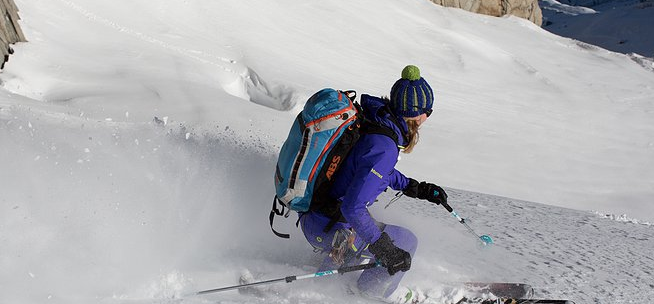 Liz Smart skiing powder from the Aiguille du Midi in Chamonix, France. Smart Mountain Guides photo.
Liz Smart skiing powder from the Aiguille du Midi in Chamonix, France. Smart Mountain Guides photo.
In Europe, I do get treated
differently. Now it’s not as bad, but last winter, I’d get comments every other
week. Someone would come up and look at my pin (that all mountain guides wear)
and they’d either ask if I was a guide or where I found the pin. When that
first started happening, I’d be really defensive. Now, I give really sarcastic
answers. I tell them I found it in a cereal box.
The other day, this Eastern
European guy was staring at my pin—which is already awkward because it’s on my
chest—and he says “Are you a mountain guide?” I said "No, I just think it’s pretty jewelry." He didn’t know what to say.
I told the clients I was with that if they are going to ask a dumb question,
I’m going to give them a dumb answer. There are 20 female guides in
France—that’s about 1% of the total. There’s even fewer in Italy. In the U.S., it’s
almost 10%, but there are still only eight of us.
When and why did you decide you wanted to
become a mountain guide?
.jpg.jpg) Liz skiing in the early season in Saas Fe. Smart Mountain Guides photo.
Liz skiing in the early season in Saas Fe. Smart Mountain Guides photo.
I knew I wanted to become a guide
in high school. I was working with Aspen Expeditions and I was interested in
becoming a ski guide, but the owner, Dick Jackson, said you’re either a mountain
guide or not a mountain guide. I started
working at Exum Mountain Guides (based in Jackson Hole) and there were some guides like Doug
Coombs and Miles (who would become her husband) who were working year-round, and
that’s when I realized I could make a full-time career out of it. I wanted to
share the mountains with people and do adventures.
What was the first step?
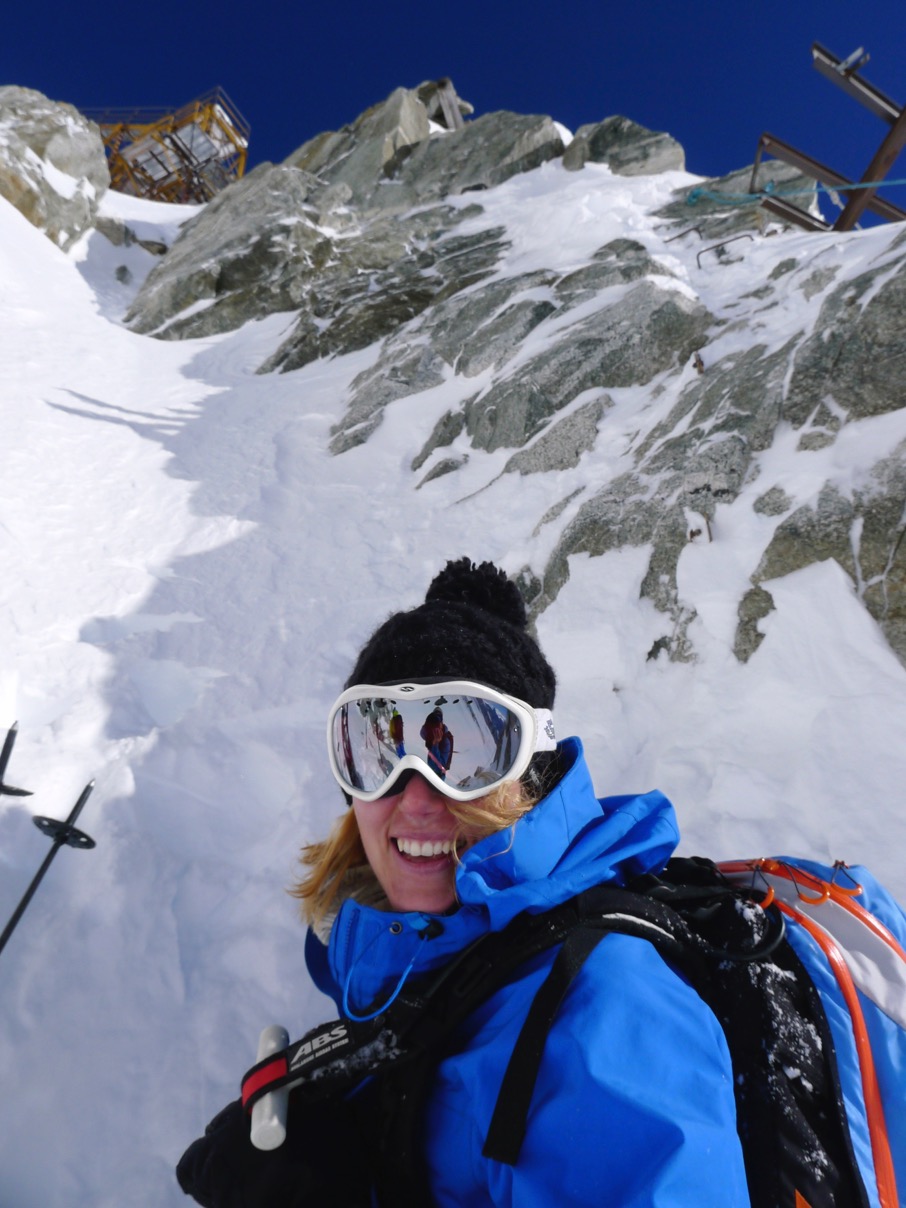 Liz Smart on the Toula Glacier, Italy. Smart Mountain Guides photo.
Liz Smart on the Toula Glacier, Italy. Smart Mountain Guides photo.
Working for Aspen Expeditions was
a good stepping off point to see what the industry was about and what the job
entailed. Then I worked at Exum, a bigger guide service and took my first course, the rock instructor
course. I still wasn’t sure I was going to do the whole thing, but it was a
good experience.
I went back to Europe and decided I was going to become a
guide or finish college. I wasn’t going to just continue taking AMGA courses—it’s
a big investment. I decided to go for it. And I eventually finished college, too. I started taking more courses and guiding. I went to college in the fall
and went to the Alps in the winter and guided for Exum in the summer. I took
AMGA courses whenever I could.
I do get treated differently. Someone would come up and look at my pin (that all mountain guides wear) and they’d either ask if I was a guide or where I found the pin. Now I just people sarcastic answers, and tell them I found it in a cereal box.
Around the time Doug died, I stopped for a
couple years. Part of it was losing close friend to the mountains. It made me
think a little more about whether I wanted to spend that much of my life in the
mountains. The other reason is once you’re halfway through the guide program,
you get into more exams and less courses. I needed to prepare more for the exams.
It was good to have couple years to hone my skills.
What are the exams like?
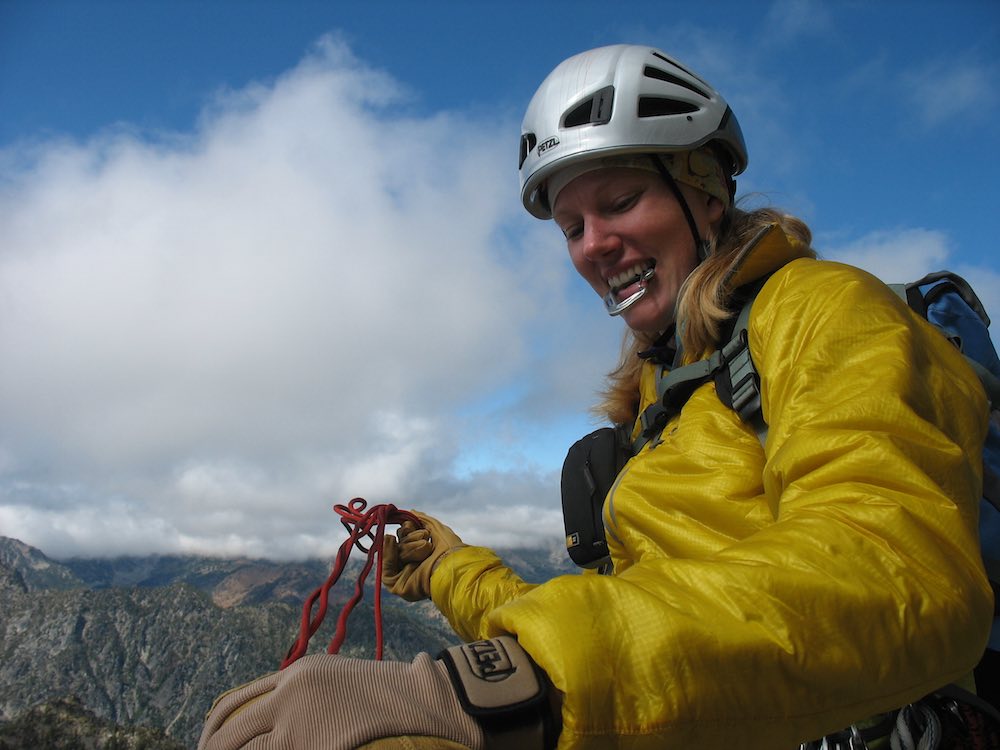 Liz training for the AMGA alpine guides exam. Erin Smart Photo.
Liz training for the AMGA alpine guides exam. Erin Smart Photo.
They are intense. There are some
fun moments, but they can be really stressful. You go into the exam with other candidates, and
everyone is quite nervous. You guide the examiners. They don’t exactly trick
you, but they do like to see how you think on your feet. You’ll be prepared for
a route and then they’ll change their mind. You have to be ready for
everything. Plus, everything you do they watch super closely. Sometimes that makes
you perform even more mistakes.
The rock exam is six days, the ski exam is 10
days and the alpine exam is 12 days. Now they have aspirant exams. You do an intro
course, the second course and a three-day aspirant exam at the end of that. If
you pass the aspirant exam, you take the final exam. Now, you have to do an ice
course as well. If you go through all of those stages and pass the final exam
for each, you’re fully qualified by both the AMGA (American Mountain Guides Association) as
well as IFMGA (International Federation of Mountain Guide Associations).
What was the hardest part?
The alpine course and exam was
probable the hardest. It’s not my specialty. I did it in the Cascades and it
was bad weather. They kept canceling days and trying to figure out things to do
with rock fall and tons of rain.
Where did you excel?
I think I did quite well with the
rock exam. Originally, it was my hardest discipline, but I trained super hard
for that one because I was quite nervous. I did the exam in Red Rocks, so I climbed a lot there beforehand so I’d be comfortable climbing sandstone and I’d be
familiar with the routes. That’s what takes a lot of time and energy… it’s quite
expensive for the courses, but you also spend a lot traveling to courses and
taking a couple weeks off to climb before the exam.
Around the time Doug Coombs died, I stopped for a couple years. Part of it was losing close friend to the mountains. It made me think a little more about whether I wanted to spend that much of my life in the mountains.
A lot of people fail the exams.
It’s quite easy to get into the program. You have to have a decent resume, but
as long as there’s space, you just sign up. A lot of people take the intro and
maybe even the advanced course, but then they don’t pass the aspirant exam. Or,
they aren’t prepared when they take the final exam years later. The program in
the U.S is very modular. A pretty high percentage of candidates fail. In France,
it’s super difficult to get into the program. They entry exams are hard. So, if
you pass the entry exam, unless you make a major mistake, you’re in.
Sign Up for the TGR Gravity Check Newsletter Now
What about continuing education?
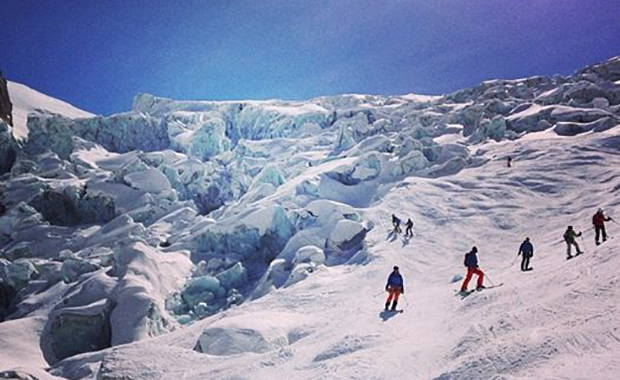 Navigating a glacier in the Alps. Photo via Liz Oakes Smart Facebook
Navigating a glacier in the Alps. Photo via Liz Oakes Smart Facebook
Now I’m a member of the French
guides association. Every six years, we take a three-day course. A lot of it deals with new
technology—ropes improve, there are different camming devices, etc. I did one
course that was focused on client care. It was about safe travel techniques as
far as keeping clients comfortable and safe and not over exerting them. In the
U.S. that’s a huge part of our program the whole time. That hasn’t always been
the case in Europe.
What’s it like guiding in
Chamonix?
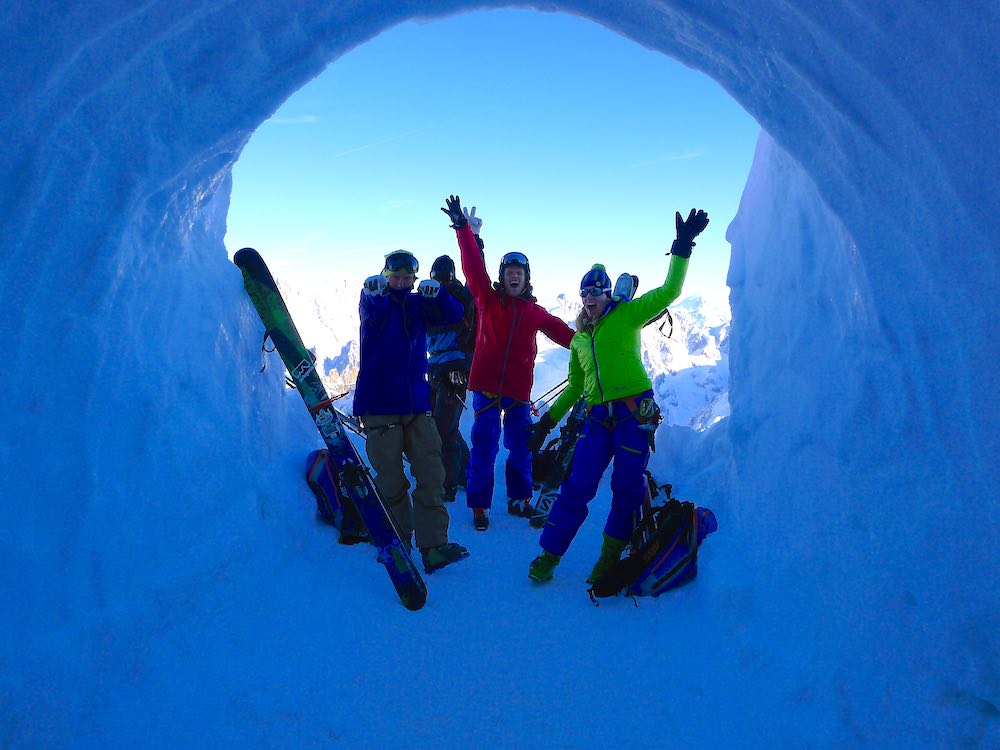 The Aiguille du Midi ice tunnel with the late Andreas Fransson, Liz Smart, and American Dave. Smart Mountain Guide Photo
The Aiguille du Midi ice tunnel with the late Andreas Fransson, Liz Smart, and American Dave. Smart Mountain Guide Photo
In Chamonix, there are a lot of
guides. That’s good and bad. It’s great to have other guides around, but other guides
can also make decisions you don’t like. Sometimes guides take too much risk. I’ll
have a group and they’ll see another group going to ski something I’m not
comfortable skiing right them. But when I explain the risks, most clients are
ok with that. The other great thing about Cham, is that it’s really big. There
are a lot of people but they are in specific places. If you tour, even for half
an hour, you can be totally by yourself.
What’s it like running your
own business?
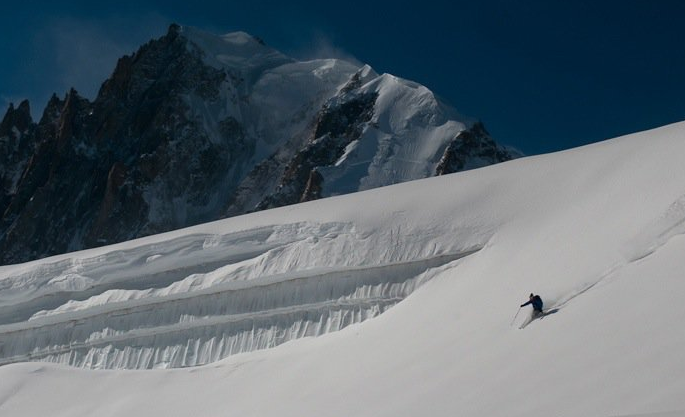 Liz's business partner & husband Miles ripping in Chamonix. Poa Andersson photo.
Liz's business partner & husband Miles ripping in Chamonix. Poa Andersson photo.
It’s great to run your own
business here in Europe. There are challenges, but being able to work
independently is great. If you are a fully certified guide in Europe, you can
work for yourself. It’s a lot nicer to make your own decisions and you aren’t under
anyone else’s thumb. The business is growing and we’re hiring other guides.
It’s also great to be guiding
year round. We are looking forward to summer guiding. It’s nice to be changing
seasons. If we were guiding skiing all year, we’d get really tired of it. When
it comes to November, I’m always really excited to ski again. Climbing and mountaineering
aren’t my favorite—I love cycling. We’re doing more and more bike guiding.
We’ve found skiers tend to be cyclists. There are more skiers who ride than
skiers who climb, so cycling is a really good complement to our business.
What do you love about guiding?
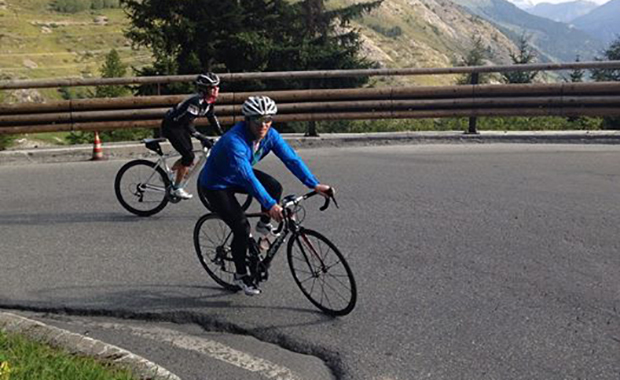 Biking is the summer passion for Liz and Miles, as well as a growing part of their summer business. Photo via Liz Oakes Smart Facebook
Biking is the summer passion for Liz and Miles, as well as a growing part of their summer business. Photo via Liz Oakes Smart Facebook
I love learning new things
everyday. It’s always changing. It depends on clients, conditions… a lot of variables
keep you on your toes. One of biggest things is always trying to make sure your
clients are having a good time. You can’t have concrete plans. The weather
changes—you have to be flexible.
Highlights of the last winter?
We had a lot of good weeks
last year. One time in mid March, it was the worst snow—it hadn’t snowed in 2.5
weeks, and it was really firm. There was a mother and son from California, and
they were really good skiers. I knew there wasn’t much to do, but they were
happy just being in the Alps. They were blown away with size of the mountains.
I took them touring, because it was good conditions for that. It was their
first time touring. At the end of the week, this kid said it was the best week
of skiing he’d ever had. He insisted they come back next year. To me, it was
the worst week of skiing of the whole winter and the fact that I made it the
best week of skiing for them… when I can give clients the best week of their
season, that’s pretty satisfying.
What advice would you offer
to an aspiring guide?
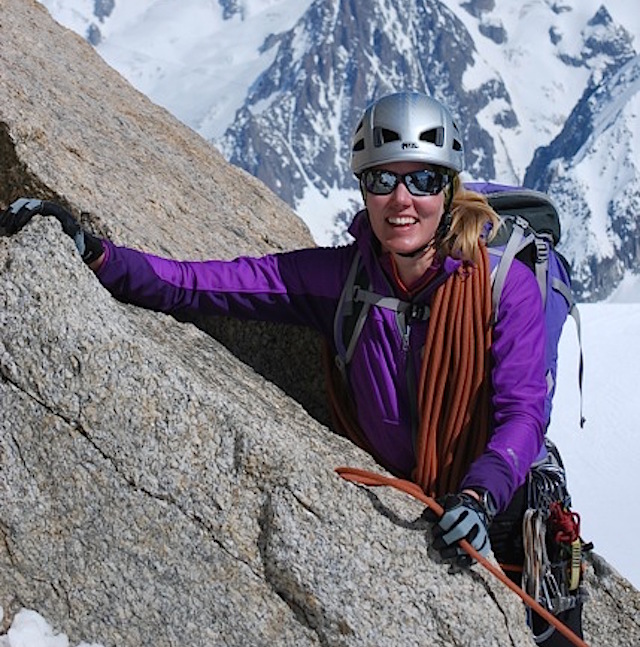 Liz Smart guiding climbing above the Vallee Blanche. Smart Mountain Guides photo.
Liz Smart guiding climbing above the Vallee Blanche. Smart Mountain Guides photo.
I would encourage them to
find a company in the U.S. that they can guide for. Either a big company like
Exum, or one of the many smaller companies. The nice thing in the U.S. is that
you can guide before you go through the whole process. In Europe, you have to
pass everything before you can guide. Go through the AMGA. They offer a whole
bunch of courses. Even if you just wanted to ski tour on your own and not be a guide,
the intro courses are great and really beneficial for your own experience in
the mountains.

